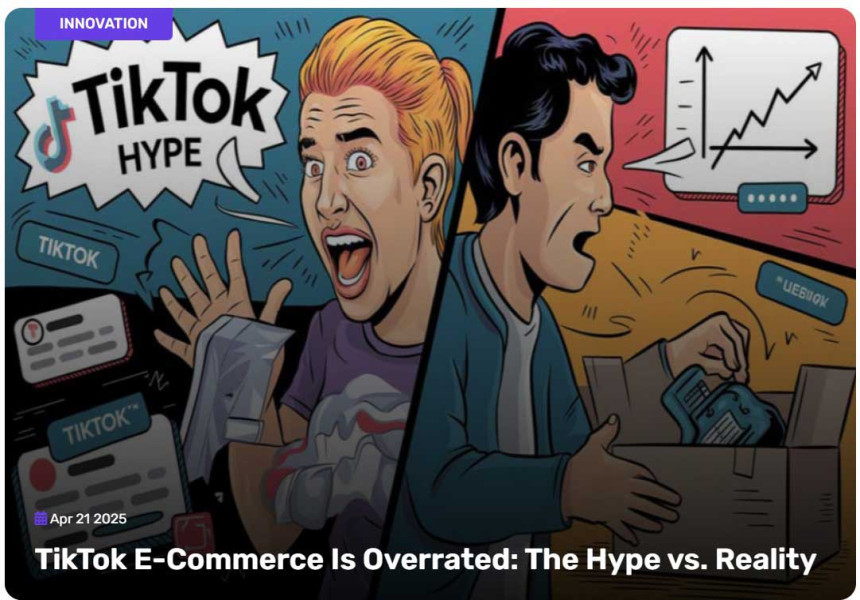TikTok E-Commerce Is Overrated: The Hype vs. Reality
In recent years, TikTok has rapidly evolved from a quirky video-sharing app into a powerful marketing machine. Its influence on Gen Z and younger millennials is undeniable, and the platform has sparked trends that have turned unknown brands into household names overnight. So naturally, the rise of TikTok e-commerce — where users can discover, review, and buy products without ever leaving the app — seemed like the next logical step.
But as brands pour marketing budgets into the platform, a critical question is emerging: Is TikTok e-commerce really as revolutionary as it's made out to be? Or is the hype overshadowing the actual results?
1. Hype Doesn’t Always Convert
Yes, TikTok can drive massive awareness. A viral video can get millions of views, hundreds of thousands of likes, and enthusiastic comments. But what most marketers won’t say out loud is this: virality doesn’t always equal sales.
Many small businesses that experienced sudden TikTok fame often report a sharp spike in web traffic — but inconsistent conversion rates. Impulse interest does not necessarily translate into sustained, loyal customers. Unlike Google Shopping or Amazon, where users arrive with intent to buy, TikTok’s users are there to be entertained, not to shop.
2. Poor Customer Experience and Trust Issues
TikTok Shop, the platform's in-app shopping feature, has been criticized for facilitating a marketplace flooded with low-quality or drop-shipped products. Since sellers can emerge and disappear overnight, many customers have had frustrating post-purchase experiences — from long shipping delays to poor customer service and products that don’t match the description.
Unlike established platforms like Shopify or Amazon, TikTok still lacks robust infrastructure for product discovery, returns, or quality assurance. The result? A consumer experience that feels like gambling.
3. Creator Burnout and Inauthenticity
Initially, TikTok’s commerce boom was fueled by creators genuinely sharing their favorite finds. But as the platform’s affiliate program expanded, feeds became flooded with sponsored content. Now, more creators are pushing products simply to earn commissions, often without testing or even liking them.
This shift is eroding trust between audiences and influencers. Viewers can sense when a recommendation is authentic — and when it’s just another sales pitch.
4. Algorithmic Roulette
TikTok's algorithm is powerful, but it’s also unpredictable. A product that goes viral today may disappear tomorrow. Brands investing heavily in TikTok e-commerce risk becoming overly dependent on a volatile algorithm, rather than building sustainable, owned channels like email lists or community platforms.
5. Data and Attribution Black Holes
One of the biggest challenges with TikTok e-commerce is attribution. Tracking the full customer journey is murky at best. Marketers often struggle to understand whether a sale came directly from a TikTok video, a repost on Instagram, or a friend who saw the video and shared it via text. This makes it hard to scale campaigns or measure ROI with any level of confidence.
Final thought: A Platform for Discovery, Not Dominance
TikTok remains a compelling platform for brand discovery, viral engagement, and storytelling — but it's not the holy grail of e-commerce that some believe it to be. For brands, especially those selling higher-ticket or high-trust products, relying solely on TikTok for conversions is a risky bet.
The smarter move? Use TikTok as a top-of-funnel tool to build awareness and intrigue. Then funnel that traffic to a controlled, owned environment where you can nurture the relationship, provide a premium experience, and actually close the sale.
In short: TikTok is a great stage — but not a great store.









